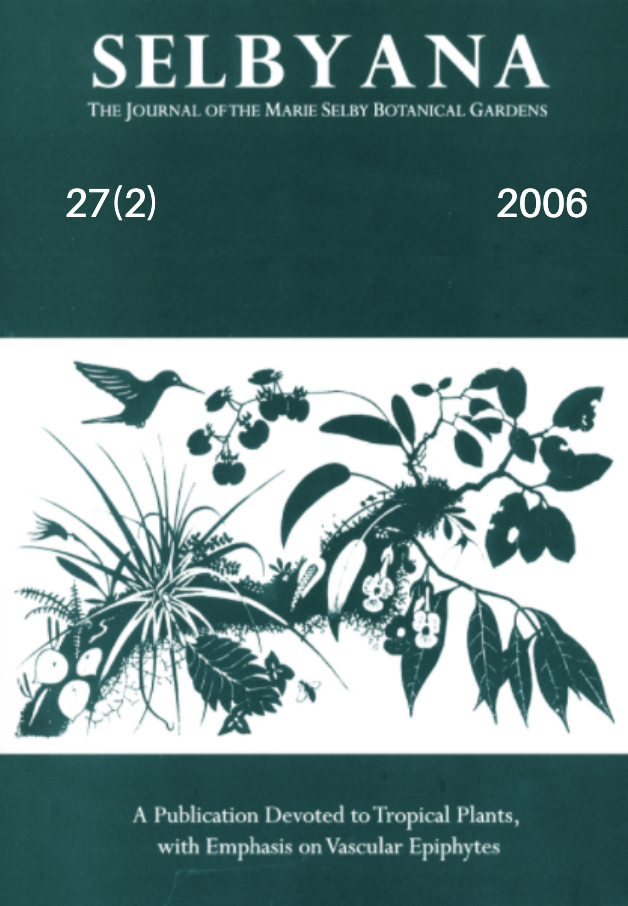Abstract
Epidendrum magnoliae is a widespread epiphytic orchid that occurs in Mexico and the United States. We investigated patterns of genetic divergence among populations of E. magnoliae distributed from North Carolina to south-central Florida. We found that populations of E. magnoliae maintain a high level of genetic diversity, 89.5% of the total variation within the species, while genetic diversity among populations was only 10.5%. Extensive gene flow has occurred within and among the northern and southern sampled regions of E. magnoliae. However there was also a significant relationship between genetic and physical distance, indicating that gene flow is reduced between more distantly spaced populations. The three populations sampled at the extreme ends of the species distribution in the United States were less diverse than more centrally located populations, suggesting a reduced rate of immigration and an increase in genetic drift. It has recently been proposed that speciation in orchids is likely due to the rapid and combined effects of genetic drift and sporadic selection. Such a scenario is more likely to occur in peripheral populations like those of E. magnoliae.
Open Access and Copyright Notice
Selbyana is committed to real and immediate open access for academic work. All of Selbyana's articles and reviews are free to access immediately upon publication. There are no author charges (APCs) prior to publication, and no charges for readers to download articles and reviews for their own scholarly use. To facilitate this, Selbyana depends on the financial backing of the Marie Selby Botanical Gardens, the hard work and dedication of its editorial team and advisory board, and the continuing support of its network of peer reviewers and partner institutions.
Authors are free to choose which open license they would like to use for their work. Our default license is the Creative Commons Attribution-NonCommercial 4.0 (CC BY-NC 4.0). While Selbyana’s articles can be copied by anyone for noncommercial purposes if proper credit is given, all materials are published under an open-access license with authors retaining full and permanent ownership of their work. The author grants Selbyana a perpetual, non-exclusive right to publish the work and to include it in other aggregations and indexes to achieve broader impact and visibility.
Authors are responsible for and required to ascertain that they are in possession of image rights for any and all photographs, illustrations, and figures included in their work or to obtain publication or reproduction rights from the rights holders. Contents of the journal will be registered with the Directory of Open Access Journals and similar repositories. Authors are encouraged to store their work elsewhere, for instance in institutional repositories or personal websites, including commercial sites such as academia.edu, to increase circulation (see The Effects of Open Access).
